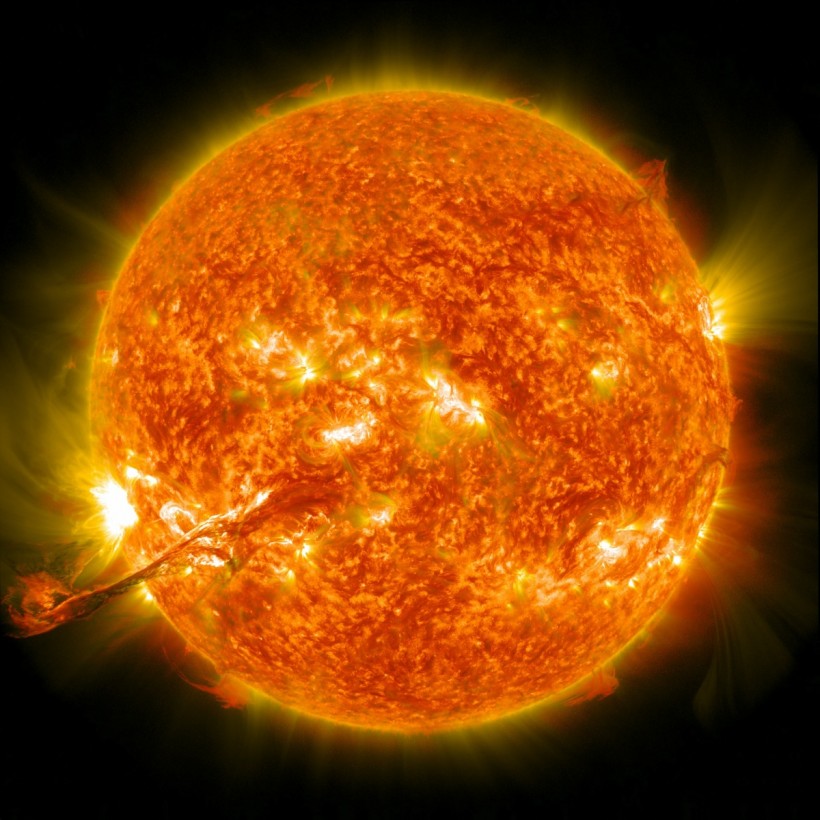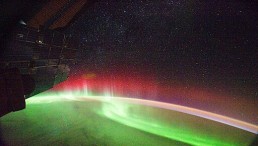NASA Solar Dynamics Observatory (SDO) recorded a partial solar eclipse. The transit lasted 35 minutes as the moon covered 67% of the sun and was only visible to SDO.
NASA received a series of images from the spacecraft showing lunar mountains backlit by solar fire. In the photos, bumps were visible. It was identified as the Leibnitz and Doerfel mountain ranges.
The moon's close-up images moved across the sun compared to the Lunar Reconnaissance Orbiter's topography map.
Space Weather said the high-resolution images captured could help the SDO science team to understand the telescope. It added that the images revealed the light diffraction around the telescope's optics and filter support grids. The agency was hopeful for the possibility of correcting SDO data for instrumental effects once the telescope gets calibrated. The agency also hoped it would sharpen the sun's images in the future.

A corona mass ejection erupts from our sun on August 31, 2012
NASA SDO Details
Launched on Feb. 11, 2010, SDO was at an orbit height of 36000 kilometers. The design helped scientists understand the sun's influence on Earth and space. It was achieved by studying the solar atmosphere on small scales of space and time.
NASA describes the SDO as a sun-pointing semi-autonomous aircraft with continuous data downlink rate of 130 Mbps. It is 4.5 m high and over 2 m on each side. With fuel, the spacecraft weighs 3100 kg. The SDO is in an inclined geosynchronous orbit to allow the sun's continuous observation.
The main goal of SDO is to understand the sun's structure and how the magnetic field is generated. It also aims to understand the process of converting the stored magnetic energy released into the heliosphere and the used space.
ALSO READ: Will The Sun Explode 5 Billion Years From Now? Probably, Experts Say!
NASA's Observation of Solar Cycle
As NASA aims to understand the sun's behavior, the agency learned that the sun becomes more temperamental.
Approximately every 11 years the sun completes the solar cycle. The cycle happens when the sun's north and south poles switch places. The solar cycle has an effect on the sun's surface, which causes the appearance of sunspots. On the other hand, the sunspot has a significant role in tracking the solar cycle. Counting the number of sunspots makes it easy to track the solar cycle.
Scientists also explained that the sun's surface activity is directly proportional to the change in the magnetic field.
Earlier this year, NASA's Stereo-A spacecraft recorded several giant explosions, also known as coronal mass ejections (CME). Scientists believed that when it collided with Earth, it could trigger geomagnetic storms that could disrupt the power grid and satellite operations. The current recording of CME early this year, we're not considered a threat to the planet.
In April 2022, NASA's SDO captured a solar flare classified as an X-class flare. NASA classified it as an intense flare. Other classes include M-, C-, B-class, and A-class.
Solar flares are large explosions from the surface-emitting intense burst of electromagnetic radiation. It's when magnetic energy that builds up in the solar atmosphere is released suddenly.
RELATED ARTICLE: Major Solar Flare Impact on Earth: How Does a Sun Eruption Affect Our Use of Electronics, Technology?
Check out more news and information on Space in Science Times.














